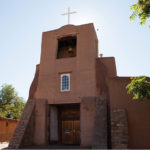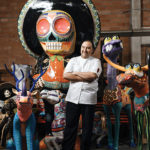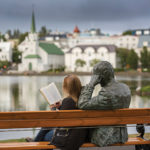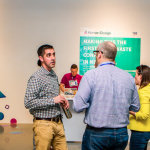On Dec. 31, 2018, the United States will officially no longer be a member of the United Nations Educational, Scientific, and Cultural Organization (UNESCO). The U.S. Department of State has cited UNESCO’s “mounting arrears, need for fundamental reform, and continuing anti-Israel bias” as reasons for the withdrawal, and although some observers see the move as long overdue — the United States stopped paying its dues to UNESCO in 2011 — others worry it could have far-reaching negative consequences.
“I think contrary to what our current president might think, the United Nations’ designations and the spirit of collaboration that takes place through all of the countries and cultures at UNESCO is something that we very much celebrate and want to be a part of,” said Josh Schamberger, president of the Iowa City/ Coralville Area Convention & Visitors Bureau. This year, Iowa City celebrates 10 years as a UNESCO Creative City of Literature. “There has been a lot of concern and questions and scratching of heads with the recent announcement,” Schamberger said, “…but our relationship with UNESCO is one that’s between the City of Iowa City and the state of Iowa and UNESCO, and we celebrate that every day.”
While most UNESCO Creative Cities in the United States that Convene talked to don’t think they will lose their designation, there are concerns that other U.S. cities and historical sites could be prevented from being designated in the future, and that the withdrawal could have an impact on relations for other U.S. organizations that work with UNESCO. Why does this matter? A UNESCO World Heritage Site designation can have a big impact on a destination, helping spur tourism and economic development. And being named to UNESCO’s Creative Cities Network (UCCN), which now includes eight U.S. cities, can have a similar effect.
Started in 2004, UCCN now totals 180 cities in 72 countries in seven fields — Crafts & Folk Art, Design, Film, Gastronomy, Literature, Music, and Media Arts. Cities must go through a lengthy application process to show how they nurture their specific field in a way that evolves and sustains it. A UCCN designation can provide an international stage for a city to flex its creative muscle, inviting collaboration and investment. Often, an increase in tourism and meetings is a byproduct effect. Although that can be difficult to quantify, most of the representatives of the UCCN cities we contacted say the designation can be invaluable in promoting their destination.
“These designations help people better define where they want to go, why they want to go there, and have a feeling of confidence that when they go there a really amazing experience is available to them,” said Cynthia Delgado, director of marketing at Tourism Santa Fe. “We are not making up the authenticity. Authenticity just means it’s who you are and what you do. And people want to be with that reality.”
Preserving authenticity is a key tenet of the UCCN mission. “There is a new demand emerging for more experiential tourism,” said Caroline Couret, founder of the Creative Tourism Network, an NGO that often collaborates with UNESCO and helps cities’ creative communities adapt to the demands of the tourism industry. “Travelers are much more interested in authenticity, traditions, and human relationships.”
People are looking for a deeper, richer visit.
“I believe that, in general with travel, people are looking for … a deeper, richer visit,” Delgado said. “They want to connect with the people in the destination, they want to connect with the history of the destination, they want to see something different. Why wouldn’t that trend affect the meetings business?”
Read on for profiles of four UCCN cities that have successfully preserved their creative heritage while benefiting from increased visibility and visitation.
IOWA CITY, IOWA
‘It Helps Us Tell Our Story Internationally’
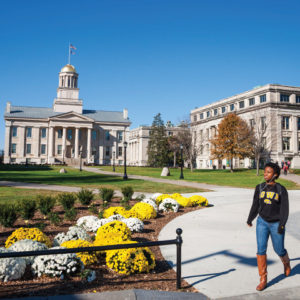
This will be a big year for Iowa City. In 2018, the destination will celebrate 10 years as a UNESCO Creative City of Literature, and in April it will host the annual meeting of the UNESCO Cities of Literature. Iowa City is home to the University of Iowa’s famous writing program, the Writers’ Workshop, which has graduated scores of successful authors like Curtis Sittenfeld, Kurt Vonnegut Jr., and counts authors like Richard Yates among its teachers. “[The designation] provided an international rubber stamp to what many in this community already knew but maybe not many in the nation,” Schamberger said, “that Iowa City is truly one of the birthplaces, if not the birthplace, of creative writing in America.”
Iowa City has seen a growth in festivals and events centered on creative writing in recent years, including the annual One Book Two Book children’s-literature festival, local World Book Day celebrations, and the Iowa City Book Festival. The festival, now run by the Iowa City UNESCO City of Literature, a nonprofit organization, has expanded to eight days and 5,000 attendees. For smaller destinations like Iowa City, the UCCN destination can help shape the city’s identity to outsiders.
“It helps us tell our story internationally,” said John Kenyon, executive director of Iowa City UNESCO City of Literature. “We didn’t need UNESCO to tell us, we already knew that. But to have it quantified by an organization like UNESCO, and to be put in the company of Edinburgh or Barcelona, it helps us tell that story to people who aren’t part of the literary community.”

Creative writing has even made its way into the city’s visual lexicon. Guests staying at the Coralville Marriott Hotel & Conference Center can relax in its Iowa Writers Library, containing manuscripts from the country’s oldest society of writers. Schamberger envisions one day developing an adaptation film festival dedicated to movies adapted from books written by authors from Iowa City, as well an awards program. “I would love to recognize the writers that have been inducted into the American literary Hall of Fame,” Schamberger said, “similar to the way Cleveland has developed under the rock-and-roll theme.”
SAN ANTONIO, TEXAS
‘We’re Very Different From Many Other Cities in America’
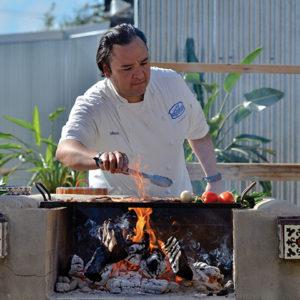
In late 2017, San Antonio became the second UNESCO Creative City of Gastronomy in the United States. The city has a rich, centuries-old culinary heritage influenced by numerous cultures, starting with Native Americans. In the late-19th century, Tex-Mex cuisine was born. It’s the food for which the South Texas city is best known, although San Antonio also has a thriving beer scene thanks to breweries that German immigrants built along the San Antonio River more than a century ago. Now, a new crop of young chefs coming out of the Culinary Institute of America’s San Antonio campus are reinventing the city’s cuisine style yet again.
It’s this commingling of conversation, cultural influences, and raw talent that sets the city’s culinary scene apart, helping San Antonio beat out seven other U.S. cities for the UNESCO designation. “Tex-Mex is obviously a part of our heritage when you look at the merging of the Native American cuisine with the Hispanic and Mexican cuisine and Spanish cuisine,” said Casandra Matej, CDME, CTA, president and CEO of Visit San Antonio. But “the culinary taste of today is Tex-Next.”
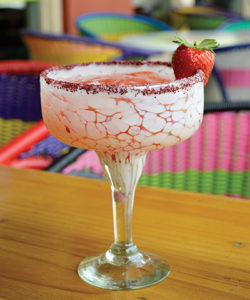
“In the last 10 years, there’s been a big movement of real authenticity and diving deeper into the heritage that shaped our local cuisine,” said Johnny Hernandez, chef and owner of 10 restaurants, including eight in San Antonio. Hernandez helped push San Antonio’s UNESCO Creative City application through, seeing an opportunity for a somewhat overlooked culinary oasis to shine. “We saw we had a story that needs to be told,” Hernandez said. “Maybe the early years of our food were shaped by commerce or national chains, but I feel that today we have such a great cross section of culinary talent. We’re very different from many other cities in America. We have a distinct cuisine that we’re known for, and then we have this emerging field of chefs coming up the ranks, opening their own restaurants and food trucks.”
On top of its new UNESCO designation, San Antonio celebrates its tricentennial in 2018, bringing with it a yearlong calendar of festivals and events honoring the city’s history and culinary heritage. In 2015, UNESCO designated San Antonio’s 18th-century Spanish-colonial missions a World Heritage Site — the first in Texas. All of these assets can help sway meeting planners, according to Matej. “A lot of associations are trying to grow their attendance internationally. Well, guess what? Internationally, they’re very aware of UNESCO designations,” Matej said. “When people come in for site inspections, or they see how we can theme their receptions,… I think all of that weighs into their final decision. Because at the end of the day, if it’s going to be an appealing destination, there’s going to be an attendee draw.”
SANTA FE, NEW MEXICO
‘UNESCO By Itself Doesn’t Create Something’
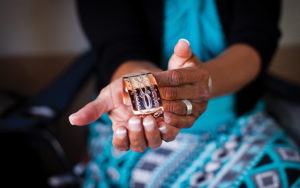
The oldest capital city in the United States, Santa Fe was also the first destination in the country to join UCCN’s field of Crafts & Folk Art. The city has a long list of artistic contributions from a diversity of cultures, varying from Native American crafts and textiles to silver from the Spanish. “Santa Fe has for many, many years — even before 2009 when we were designated — has had a commitment to craft, folk art, and fine art,” said Tourism Santa Fe’s Delgado. “And the designation brings with it what I would call a third-party visibility to the depth of what the community has.
“The UNESCO designation provides to the awardee and to the public a symbol of excellence in these areas and that we use to continue to share Santa Fe’s core offers,” Delgado said. “So UNESCO by itself doesn’t create something, it provides that level of quality significance. That leveraged with what we do day in and day out with our museums, with our artists, with our markets, really provides this very rich story to tell leisure travelers. And when you can do that with leisure travelers, it has a secondary impact on your meeting and group business.”

Delgado gives examples like the Annual Meeting of the Society for Applied Anthropology in March 2017, which offered presentations on San Antonio’s lowrider (car) culture and visits to historic sites and museums like the School for Advanced Research’s Indian Arts Research Center and the Museum of International Folk Art. She estimates that more than 50 percent of meetings incorporate some kind of cultural element into their program, such as a visits to the Georgia O’Keeffe Museum followed by a demonstration and meal at the Santa Fe School of Cooking or the O’Keeffe-inspired tasting menu at Eloisa restaurant. “All of a sudden, there are two reasons to be here,” Delgado said, “ One, it’s a great place to have a meeting, and two, you are surrounded by this richness of craft, art, design, and history.”
REYKJAVÍK, ICELAND
‘Increasingly, People Are Interested in Cultural Tourism’
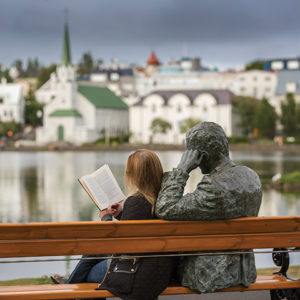
The Blue Lagoon, the aurora borealis — most travelers to Iceland have those attractions at the top of their list. But Iceland’s most important cultural contribution can’t be seen; it has to be read. In 2011, UNESCO designated Reykjavík a Creative City of Literature, honoring its mythology and poetry that dates back to medieval times, as well as the efforts of institutions like the Icelandic Literature Centre, the Árni Magnússon Institute for Icelandic Studies, and the new Vigdís International Centre for Multilingualism and Intercultural Understanding at the University of Iceland.
Along with encouraging partnerships at home and abroad, and putting on events like the month-long Reykjavík Reads festival, the Reykjavík UNESCO City of Literature office is tasked with strengthening international as well as domestic awareness of the city’s literary heritage. As visitors explore Reykjavík, they’ll see signs of that heritage scattered throughout the destination. “We think about the city landscape a little bit, we put up signs about literary history, we put up benches where you can listen to readings on smartphones” via QR code, said Kristín Viðarsdóttir, project manager for the office, which is run by Reykjavík’s department of culture and tourism. The Reykjavík Culture Walks app is available in Icelandic, English, German, and Spanish. Visitors can also take guided literary-themed walking tours in the summer months, and local companies such as Creative Iceland offer hands-on activities, including Icelandic-language classes.
People are interested in cultural tourism overall, and the literature is a big part of that.
Although there is no quantifiable data to show whether Iceland’s literary lineage significantly affects Reykjavík’s tourism and meetings business, Viðarsdóttir is confident that it helps. “We do think, increasingly, people are interested in cultural tourism overall, and the literature is a big part of that,” she said. “Over time, we believe it brings international awareness of Reykjavik as a literary destination.”

